Hello everyone! Autumn is almost here, the time of year landscape photographers most look forward to. And for good reason! Autumn is an incredible time of year for landscape photography, filled with vibrant colours and attractive complimentary weather conditions. Let’s take a look at why autumn is so special for landscape photographers and what you should look out for to make the most of this special season.
Why Is Autumn So Special For Landscape Photographers?
A Sea of Spectacular Colours
When you hear the word ‘autumn’, what is the first thing that comes to mind? Without a doubt, vivid colours are high on the list. Autumn is a time of transition for natural landscapes, especially for trees and plant life. With this transition comes a sea of spectacular reds, yellows, and oranges. The range of vibrant colours offers endless potential for stunning autumnal landscape photography. Because of this, landscape photographers across the world do their very best to make the most of this treasured time of year.
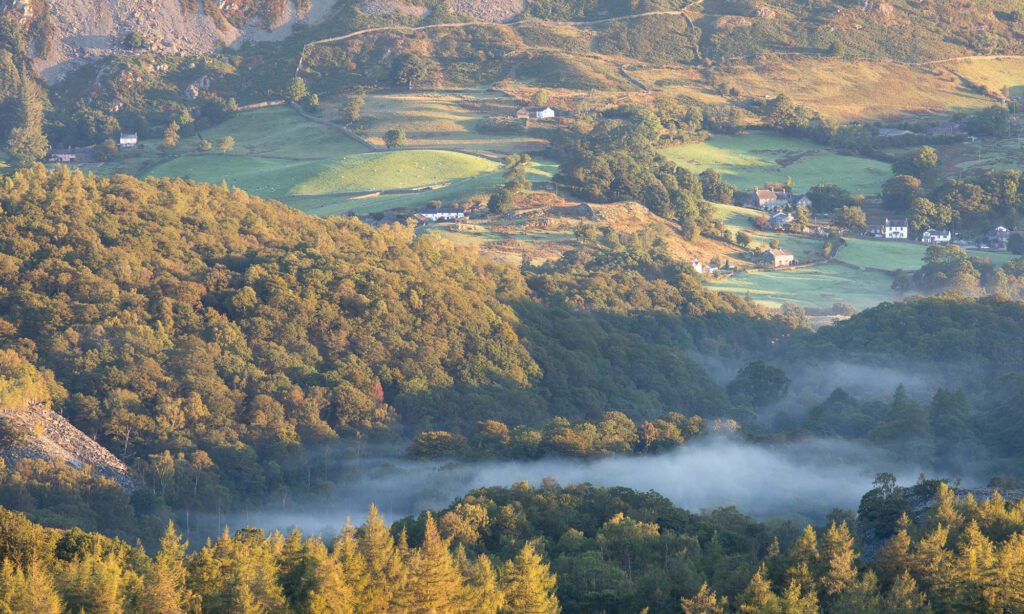
Depending on which definition you follow, autumn has two starting dates. Meteorological autumn begins on 1st September and ends on 30th November. Astrological autumn begins on 21st September and ends on 21st December. Peak autumnal colours in the UK are hard to predict and can depend on several influences. Late springs and summer droughts are both examples that can affect the appearance of autumnal colours. Generally, October and early November are the best months for peak autumnal colours.
Light Landscape Photographers Dream Of!
Autumn marks the beginning of shorter days and longer nights. Although this sounds gloomy, reduced daylight hours actually provide several benefits for landscape photographers!
Firstly, during autumn, the sunlight is less direct. Throughout the autumn months, the sun sits lower in the sky compared to summer. As a result, autumnal light is more photogenic. For landscape photographers, autumnal sunlight provides softer and more golden light, especially during golden hours. During autumn, the sunlight also tends to be less harsh throughout the day. This means that landscape photographers can enjoy usable light outside of traditional golden hours.
Secondly, you don’t need to wake up ridiculously early for sunrise! One big challenge for landscape photography during summer months is waking up for sunrise opportunities. Nothing is more punishing than a 2 a.m. alarm to catch a sunrise during peak summer months. Reduced daylight hours during later autumn months make golden hour opportunities much less punishing. Enjoy those extra few hours in bed!
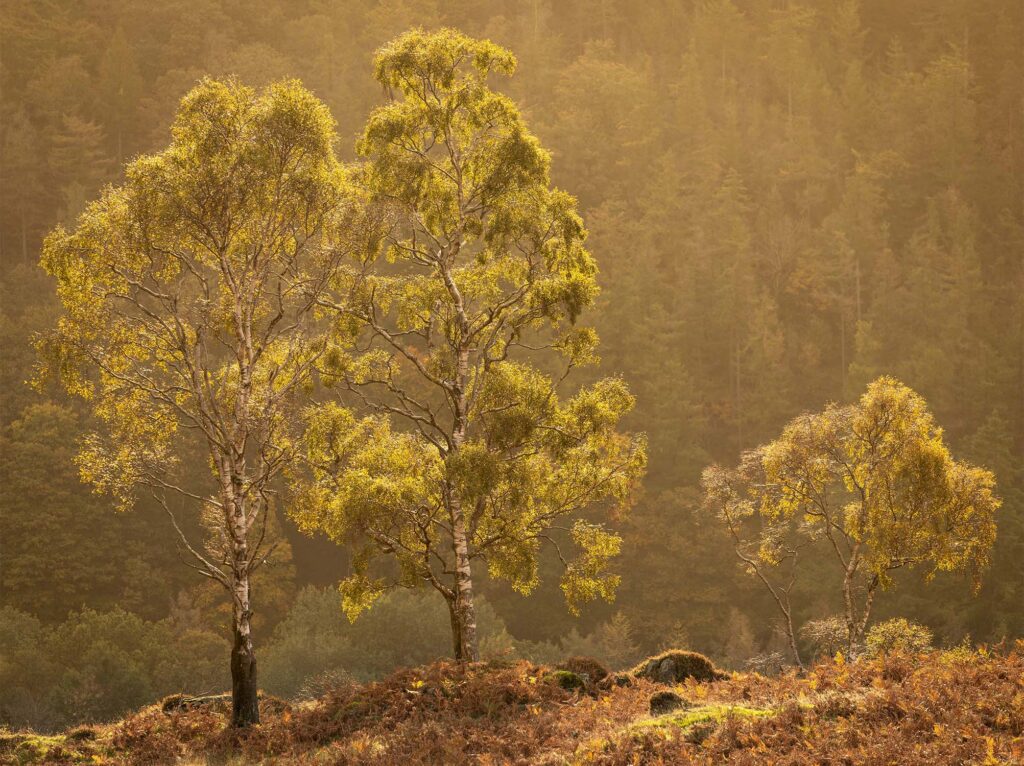
Landscape Photographers Love Atmospheric Weather
Autumn is a season that brings a greater chance for more varied weather. For landscape photographers, there is no better season. Throughout autumn, you can experience moody skies, mist, cloud inversions and the beginning of frosty mornings. Combining the varied weather with the explosion of vibrant colour, it is easy to see why landscape photographers adore autumn.

If you would like to know more about cloud inversions, please head over to my previous blog post where I briefly talk about what cloud inversions are and how they are formed.
Tips and Tricks Used By Landscape Photographers
Scout For Locations In Advance
One of the best tips for capturing the best autumnal landscape photographs is to get out there early and scout locations in advance. Pay close attention to the types of trees in the landscape. Not all species of tree will hit peak colours at the same time. Silver birch trees are usually the first to display their autumn colours, whilst oak trees are generally one of the last. Consider the direction you will be photographing the scene and whether or not it favours sunrise or sunset. Apps such as PhotoPills use augmented reality to show the position of the sun in the sky at different times of day. The benefit of this is that you can find the perfect time to photograph a specific location you have discovered.
Try your best to cover a range of weather-based scenarios. For wet and rainy conditions, maybe consider venturing into your local woodland. For dream weather conditions capable of producing cloud inversions and early morning mist, consider looking for locations close to a body of water such as a river, lake, or canal. It pays to climb above ground level during cloud inversions. Positioning yourself above the mist and looking down towards nearby trees or points of interest can produce breathtaking landscape photographs. Finally, for those rare calm mornings with little to no wind, look for a body of water and consider photographing reflections. Reflections can produce stunning photographs, especially when combined with beautiful autumnal colours.
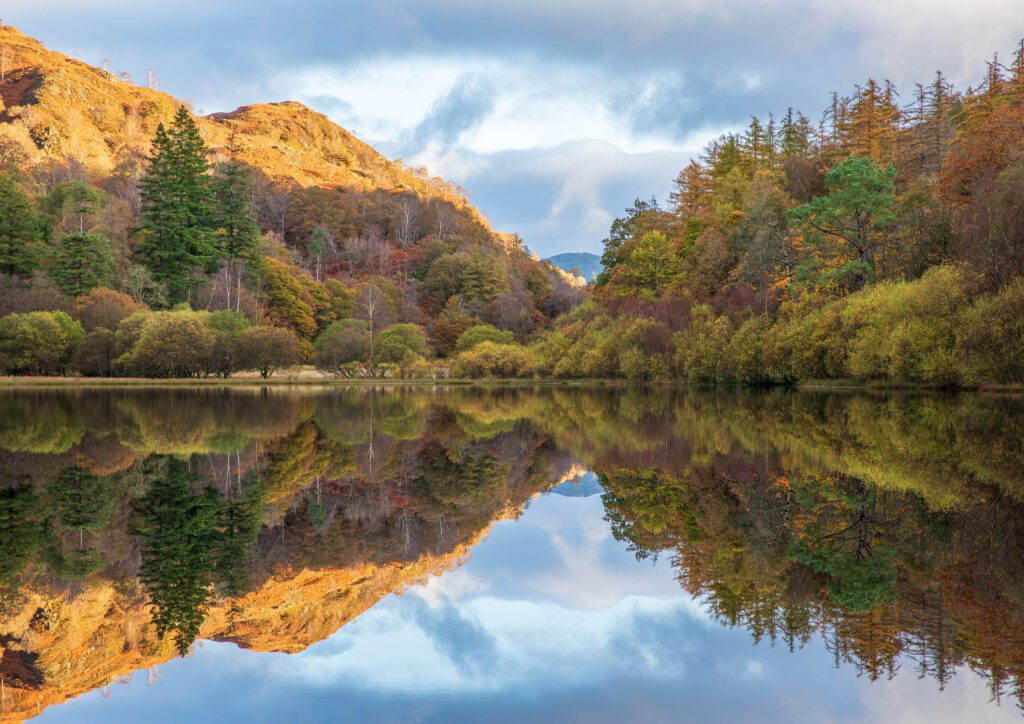
Pay Attention To Weather Forecasts
To really make your autumn landscape photography stand out, keep a close eye on the weather. Use reliable weather apps such as Clear Outside and Ventusky as well as Met Office forecasts. Consider your locations in advance and know what weather patterns you need to capture the perfect scene. Remember that the weather can be dynamic so don’t rely on forecasts days in advance. Even on the day, the forecast can change so it is important to be prepared for all situations.
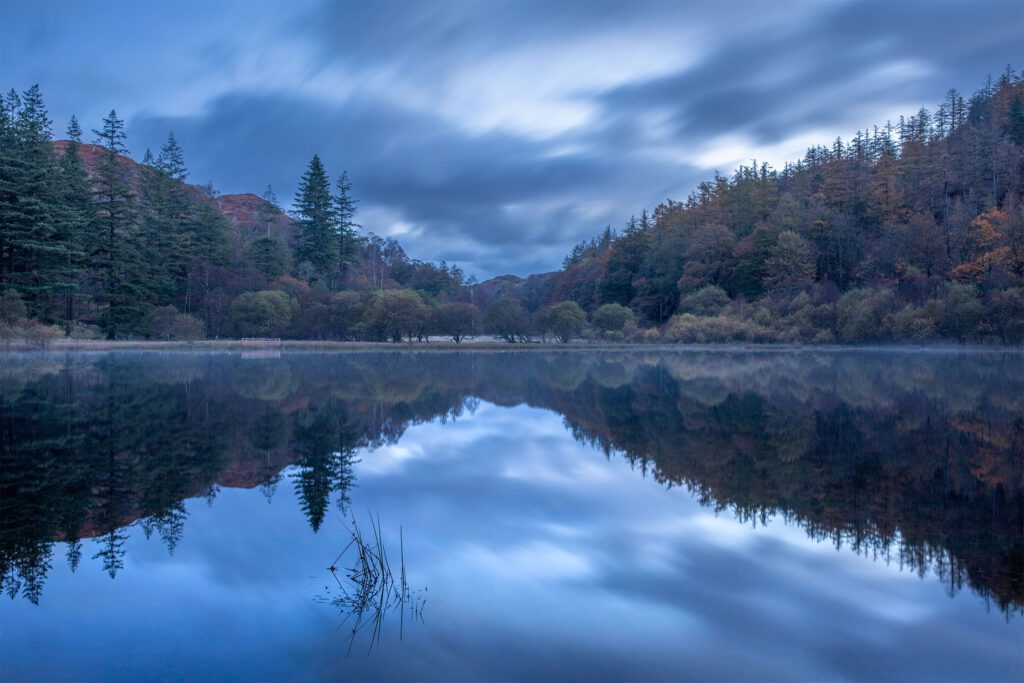
Use a Polarising Filter
Polarising filters can be incredibly effective tools for autumnal landscape photography. The job of a polarising filter is to remove unwanted glare and reflections from wet leaves, rocks, or water. One example of a situation where a polariser would be beneficial is a woodland scene after recent rainfall. Wet leaves are a significant source of reflections and can potentially ruin an image. The ability to remove or reduce reflections will improve the appeal of a photograph.
Another benefit of using a polarising filter is that it can help to boost colours and contrast and enhance blue skies. Blue skies can be tricky to photograph because they often contribute to high-dynamic scenes. The use of a polarising filter can reduce the need to bracket photographs for correct exposure. Finally, a polarising filter will boost the saturation of your autumn landscape photographs, particularly as the autumn colours reach their peak colours.
Bracket For Perfectly Exposed Photographs
Throughout autumn, there is a good chance that you will come across landscapes with very bright highlights and very dark shadows. These situations are referred to as “high-dynamic” and are tricky to expose in a single photograph. As a result, landscape photographers can use the bracketing function built into most digital cameras. Bracketing allows photographers to take a series of individual photographs exposed for highlights, shadows and midtones. Each of the photographs can then be combined in post-processing software to produce a perfectly exposed photograph. If your camera does not have the ability to bracket, you can achieve the same result manually by using the exposure compensation setting.
Set Yourself an Autumn Landscape Photography Project
A great way to make the most of autumn is to set yourself a landscape photography project. Projects are a fantastic way to keep yourself focused and motivated. The great thing about projects is that you alone can define how far you want to go. Consider your local woodland and capture the transition of the trees from summer greens to vibrant autumnal hues. If you live next to a source of water, photographing reflections can make for a very entertaining project.
In short, set yourself a goal that keeps you motivated and gives you a reason to escape the stress of life for an hour or so. Enjoy as the environment transforms around you and most importantly, learn new tricks and photography techniques along the way.
Summary
In conclusion, autumn is a highly-regarded season, one which landscape photographers across the world look forward to with huge anticipation. Autumn represents a natural transition that benefits landscape photography in several ways. Firstly, with more photogenic light. Due to the sun sitting lower in the sky, light is more golden and less direct which dramatically improves the appeal of photographs. Secondly, at its peak, Autumn transforms natural landscapes with a sea of incredibly vibrant colours that leave photographers in awe. Finally, photographers can enjoy a few extra precious hours in bed as sunrise becomes later and later.
To make the most of autumn this year, be sure to scout for locations in advance. Use apps such as PhotoPills to make life easier and help identify the best time of day to compliment your composition. Most importantly, keep tabs on the weather. No weather is bad weather when it comes to landscape photography. Match your locations to the weather conditions to increase your chances of capturing your dream photographs.
Have fun this autumn, and enjoy your time outdoors. It’s a breathtaking time of year and it doesn’t last long enough!
Additional Reading
If you would like to know more about polarising filters, bracketing or several other key photography techniques, please visit my landscape photography guide. Within my guide, I cover a wide range of topics in more detail.
Useful Links
PhotoPills, the all-in-one photography planning app. https://www.photopills.com
Ventusky, the in-depth weather app. https://www.ventusky.com
Clear Outside, the in-depth weather app. https://clearoutside.com

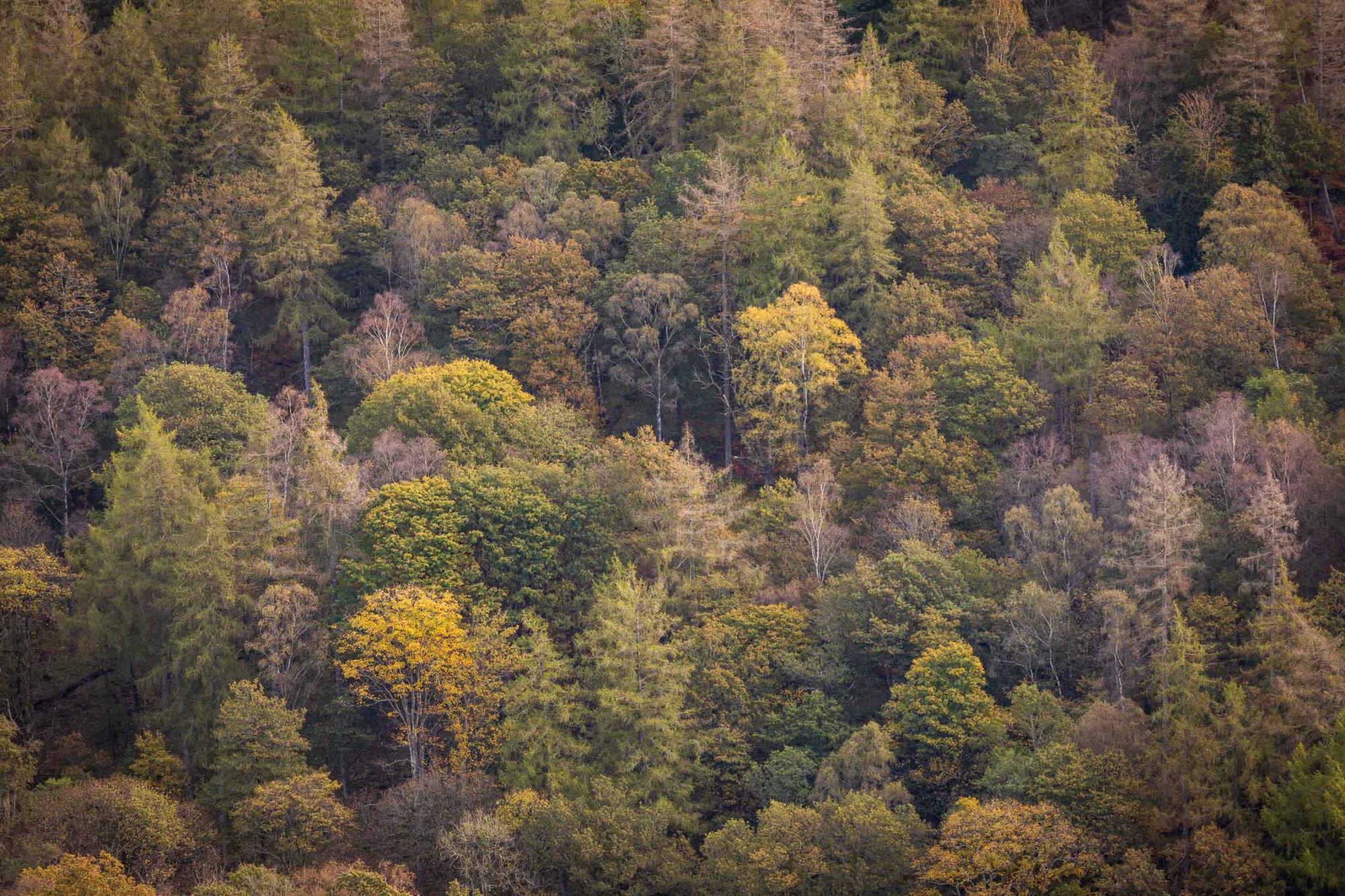
Some great advice, Simon! Autumn is my favourite season too, the softer light is so beautiful to work with!
Thanks, Steven, much appreciated! Agreed, autumn is a spectacular season for landscape photography. It’s just a shame it doesn’t last longer.